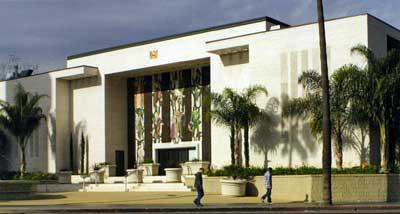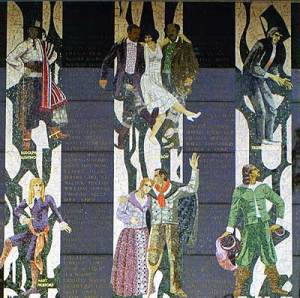Yesterday, Devi wrote about Millard Sheets. Most of us know him as the artist from the 1920s and '30s whose work offered gritty yet expressive depictions of Bunker Hill in downtown L.A.—LACMA has several of his works in our permanent collection. Less known, however, is that Sheets's abilities as an artist had a profound influence on the architecture of L.A.

Washington Mutual Bank, Sunset and Vine
Though he had no formal training or credentials as an architect, Sheets owned a design and architectural firm called Millard Sheets Design Inc., for which he oversaw all of the design and construction of the buildings they worked on, which included more than forty Home Savings of America bank branches (currently Washington Mutual) in Southern California.
Sheets's guiding principle in architecture was to conceive "buildings that will be exciting seventy-five years from now," according to the artist in an interview given for the Archives of American Art at the Smithsonian Institution. Each building was unique, site-specific, and often adorned by large-scale mosaics, meant to reflect California history, the progress of mankind, family life, and local landmarks.
His most famous structure was completed in 1968 on the corner of Sunset and Vine. Built on the original location of Hollywood's first full-length motion picture, the building is adorned with a mural depicting legendary movie stars from Hollywood's Golden Age.
Taras W. Matla
Curatorial Administrator, Prints and Drawings




